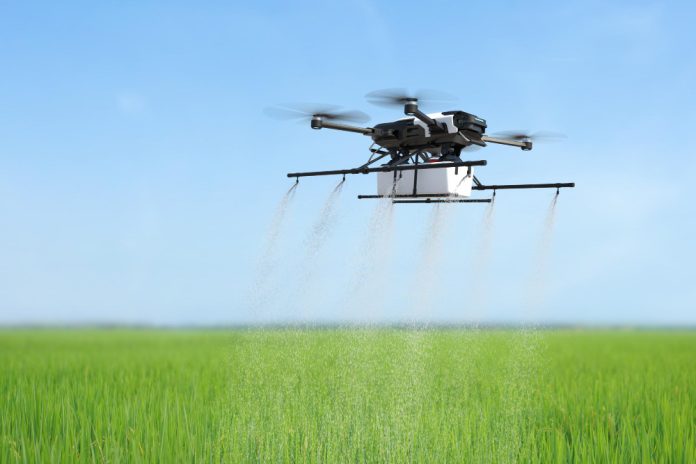For decades, Indian farmers have relied on tried-and-tested methods passed down through generations. These methods brought harvests, but they often depended heavily on labor, weather, and time-consuming manual work. Many farmers still spend long hours spraying fields by hand, facing health risks from chemicals and uncertainty about crop results.
But now, the shift toward modern farming methods is opening new possibilities. Among the most exciting tools are agricultural drones, machines that can spray crops, collect data, and improve yields with unmatched precision. For farmers seeking better profits and rural entrepreneurs wanting to build new opportunities, drones are becoming a practical, affordable reality.
This blog explores how drones are changing farming in India, making it more efficient, sustainable, and future-ready.
The Evolution of Farming Methods: From Tradition to Technology
Indian agriculture has always been rooted in hard work, deep knowledge, and community effort. However, traditional farming often struggled with efficiency and unpredictability, especially when nature didn’t cooperate. The introduction of technology into modern farming methods is not about replacing old wisdom; it’s about enhancing it.
Challenges of Traditional Farming
Traditional farming requires intense manual labor, often taking days to cover large fields. Farmers apply water, pesticides, or fertilizers without knowing exactly how much each plant needs. This leads to waste, increased costs, and sometimes harm to soil and the environment. Weather prediction by observation alone can be inaccurate, causing poor planning during critical crop stages.
The Rise of Modern Farming Methods
Technology has brought precision to farming, reducing waste and increasing yield potential. Tools like drip irrigation, soil sensors, and drones help farmers work smarter, not harder. Among these, drones are quickly becoming essential. They spray fields evenly, collect real-time data, and work quickly, even in remote areas, helping farmers save time and resources.
Drones as a Cornerstone of Modern Farming Methods
Drones are no longer just experimental tools for agriculture; they are practical, everyday solutions. They combine speed, accuracy, and safety, making them vital for farms of all sizes. Farmers now see drones as partners that help them make decisions based on facts, not guesswork.
Precision Crop Monitoring and Data Collection
Equipped with advanced sensors, drones can scan fields and detect problems early. Multispectral and thermal imaging allow farmers to see issues like pest attacks or water stress before they spread. This data helps farmers take action at the right time, improving crop health and reducing losses.
Precision Spraying and Resource Optimization
Drones apply fertilizers and pesticides exactly where needed, avoiding unnecessary spraying. This method can reduce chemical use and water consumption by up to 90%. For small farmers, this means big savings, while larger farms benefit from consistent, even application across vast fields.
Automation and Labor Savings
One drone can cover up to 50 acres in a single day. This reduces dependence on manual labor, which is becoming scarce and costly in many areas. Farmers can complete spraying during optimal weather conditions without rushing or hiring large teams.
Unique Advantages of Drone-Enabled Modern Farming Methods
While other modern tools improve farming, drones deliver a combination of benefits that directly impact profitability, safety, and sustainability. They not only make farming easier but also open new income opportunities for rural entrepreneurs.
Boosting Crop Yields and Quality
Drones detect diseases, pests, and nutrient deficiencies before they cause serious damage. By addressing these issues early, farmers can increase yields by up to 20–25% and produce healthier, higher-quality crops.
Environmental Sustainability and Cost Efficiency
Precision spraying ensures that chemicals are used only where necessary, reducing runoff into soil and water sources. Farmers report using 40–60% less pesticide and fertilizer, lowering both input costs and environmental harm.
Enhancing Farmer Safety and Rural Empowerment
By handling spraying tasks, drones minimize direct human exposure to harmful agrochemicals. At the same time, they create new jobs for trained rural drone operators, offering young entrepreneurs a path into agriculture technology.
The Future Outlook of Integrating Drones
The future of Indian farming will be shaped by technology that works together, drones, sensors, and smart software creating a complete farm management system. This integration will make farms more productive and environmentally friendly.
AI-Driven Drone Fleets for Scalable Operations
Autonomous drone fleets can work together to cover larger areas in less time. Swarm technology enables multiple drones to operate in coordination, doubling efficiency for big farms and community farming projects.
Real-time Decision Making Through Integrated Data
By combining drone data with soil sensors, weather updates, and predictive analytics, farmers can make accurate decisions instantly. This helps with everything from irrigation planning to choosing the right time for harvesting.
Sustainability and Traceability
Drones can track input use and environmental impact, helping farmers meet sustainability goals. They also support transparent supply chains by documenting crop growth and health from seed to harvest.
Conclusion
The journey from traditional to modern farming is not about abandoning the past—it’s about building on it. Drones bring precision, safety, and efficiency, helping Indian farmers increase profits while protecting the environment.
For those looking to secure the future of their farms and communities, drone technology is no longer optional; it is essential. The time to embrace it is now, as part of the ongoing transformation toward smarter, more sustainable farming.

